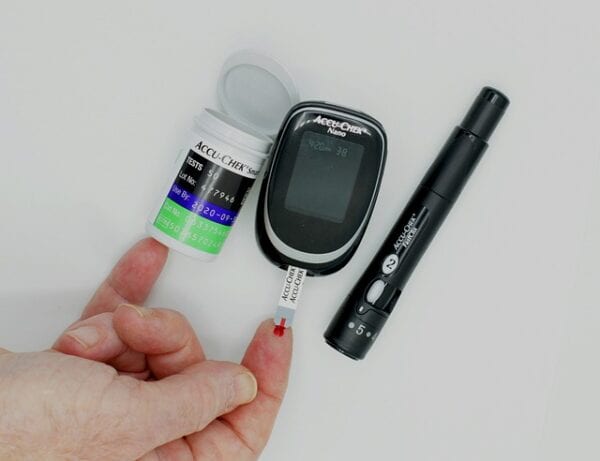With insulin products continually coming to market, it can be challenging to stay current with the new information. Here is a brief overview of newly approved insulin products in the last few years, some highlights that might make them unique, and how to switch your patients’ insulin therapy to these products. As a clinical pharmacist, it is important to me to recognize that any switch to a different insulin should be treated with respect and care. Regardless of how easy a transition from one insulin to another may seem from the package insert and clinical trials, I think it is responsible to monitor a transition a little more closely and inform the patient about any subtle differences in the pharmacokinetics that may contribute to blood glucose variations.
Fiasp
Fiasp (Novo Nordisk) was approved in September of 2017, so you may be more familiar with this one. It is insulin aspart, akin to Novolog. Clinical trials showed Fiasp to be non-inferior to Novolog at reducing A1c. Fiasp also contains two additives (L-arginine and niacinamide) which help it to enter the bloodstream in roughly half the time of Novolog. This quicker onset of action allows for greater insulin exposure within the first 30 minutes. Trials also showed that the glucose-lowering effect of Fiasp was significantly greater than that of Novolog during the first 90 minutes, but the effects were similar at 120 minutes. Even with the quicker onset and greater insulin exposure, Fiasp did not significantly increase hypoglycemia.
Typically, a one-to-one unit conversion when switching patients to Fiasp from another fast-acting insulin, such as Novolog (aspart), Humalog (lispro), or Lyumjev (lispro) is appropriate. A one-to-one unit conversion should also be followed when converting from Novolin R or Humulin R (regular insulin) to Fiasp.
Lyumjev
Lyumjev (Lilly) was approved in June of 2020 and is pronounced LOOM-jev. Lyumjev is a rapid-acting lispro agent like Humalog. Similar to Fiasp, Lyumjev contains two additives (treprostinil + sodium citrate) which open up the blood vessels and allow for a quicker absorption time and onset of action – about 10 minutes faster than Humalog. Lyumjev can be administered at the start of a meal or within 20 minutes after starting the meal. The rapid onset of action allows patients to inject Lyumjev even 20 minutes after starting their meal and get the same glucose-lowering effects as patients who inject at the start of their meal. This allows patients greater flexibility to start their meals before dosing their insulin and allows leeway if the injection is forgotten prior to the meal. Clinical trials demonstrated Lyumjev to be non-inferior to Humalog in reducing A1c; however, injection-site reactions were more common with Lyumjev than Humalog. Mealtime Lyumjev was superior to Humalog in controlling 1- and 2- hour postprandial glucose. Hypoglycemia and weight gain were similar between Lyumjev and Humalog, however, injection-site reactions were significantly more common with Lyumjev.
When switching from another fast-acting insulin, such as Humalog (lispro), Novolog (aspart), or Fiasp (aspart), follow a one-to-one unit conversion. When converting from Novolin R or Humulin R (regular insulin) to Lyumjev, follow a one-to-one unit conversion.
Semglee
Semglee (Mylan) was approved in June of 2020, and it is a long-acting, once-daily glargine product like Basaglar and Lantus. In clinical trials, Semglee demonstrated similar decreases in A1c and similar adverse effects. Notably, the listed price of Semglee is much less than its other glargine competitors, which may help patients afford their basal insulin. The average wholesale price (AWP) of Semglee is roughly one-half that of Basaglar and one-third that of Lantus for 3 mL pen devices. Of course, product selection and patient co-pay will depend on insurance coverage. For uninsured patients, lower-cost Semglee may be a more affordable option than other long-acting agents.
Follow a one-to-one unit conversion when patients are switching to Semglee from Lantus or Basaglar (glargine). When switching from Levemir (detemir) to Semglee, follow a one-to-one unit conversion and dose the insulin once daily; however, a lower dose may be necessary for some patients. If switching patients from Toujeo (glargine U-300) or Tresiba (degludec), reduce dose by 20% and dose once daily.
Hopefully, this gives you a nice refresher of newly approved insulin products and their possible role(s) in managing diabetes patients. If you found this article helpful, you may like this one on continuous blood glucose monitors.
This article was written by Sarah Jackson, PharmD Candidate, in collaboration with Eric Christianson, PharmD, BCPS, BCGP
- 30 medication mistakes PDF
- 18+ Page Drug Interaction PDF
- 10 Commandments of Polypharmacy Webinar based on my experiences in clinical practice



0 Comments
Trackbacks/Pingbacks